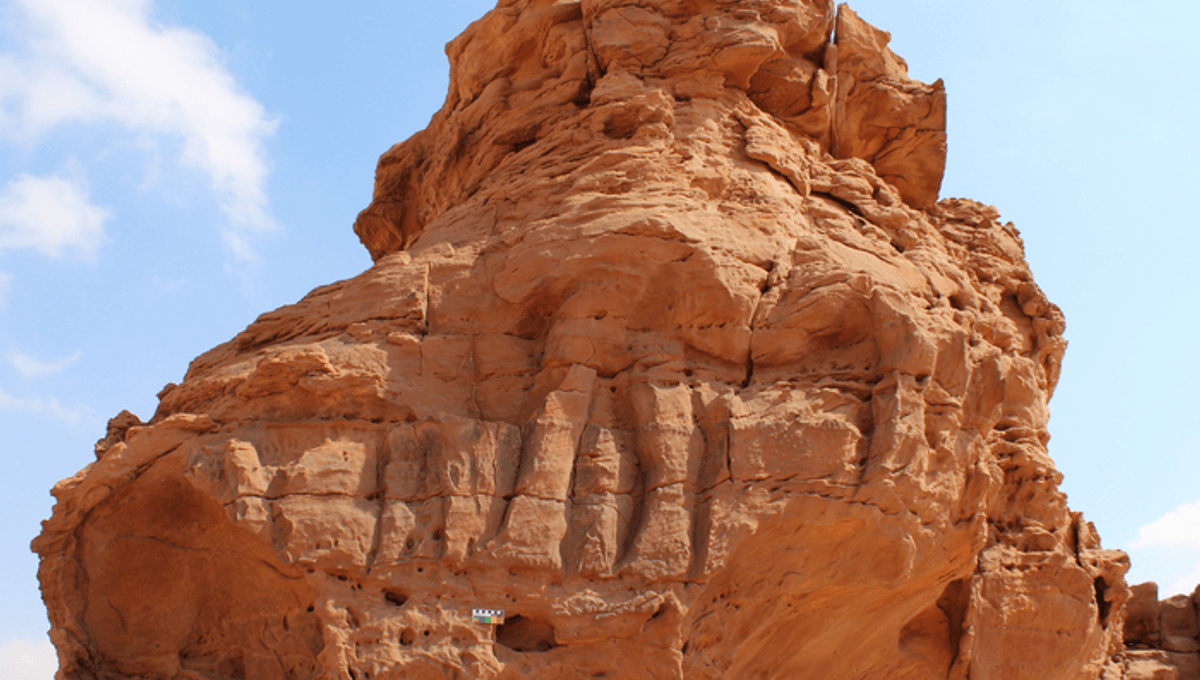
The province of Al-Jouf in the northwestern Saudi Arabian desert is home to 21 enormous 3D carvings into the rockface. These depictions of camels and horses were found in 2018 and first believed to be around 2,000 years old. Subsequent testing, however, revealed they likely predate Egypt’s pyramids and even Stonehenge.
Despite extreme weathering as a result of the harsh desert conditions, the carvings can still be made out to be life-sized depictions of predominantly camels, with some carvings also appearing to be of donkeys or horses.
The impressively accurate and detailed artworks are believed to depict some of the camels during mating season – with bulging necks and round bellies – which could suggest the site’s cultural ties with the seasons or with fertility.
During the Neolithic period, the land surrounding the rocks was peppered with trees and lakes, possibly a watering ground for the wild camels shown in the carvings. With the domestication of camels not appearing until 1200 BCE, local people likely hunted wild camels in the surrounding area.
It’s believed the camels were carved from tools made from chert, a type of stone thought to be brought to the area from at least 14.5 kilometers (9 miles) away. They were estimated to each take between 10 and 15 days to carve, and their symbolism was thought to create a communal meeting ground for the people of the Neolithic.
In places, the life-sized carvings are stacked two or three layers on top of one another, suggesting the need for some form of scaffolding during construction. Additionally, there were no signs of pottery or metal tools found at the site, leading researchers to conclude the initial 2,000-year-old estimate to be inaccurate.
Difficulties in dating stone carvings led to an initial estimate based on the assumption of relation to the carved rock at Petra, Jordan – thought to be the work of the Nabataeans, contemporaries of the Romans.
A subsequent paper published in 2022, however, details a number of tests conducted on the site with the aim of establishing a more accurate age. X-ray fluorescence spectrometry and luminescence dating were used to help age the rock, while the site’s animal remains were radiocarbon dated and the rock analyzed for erosion patterns and tool marks.
The findings of this paper concluded the age of the rock carvings to be between 7,000 and 8,000 years old, considerably older than the estimated 5,000-year-old age of the UK’s Stonehenge.
Source Link: These Saudi Camel Carvings Are Older Than Stonehenge